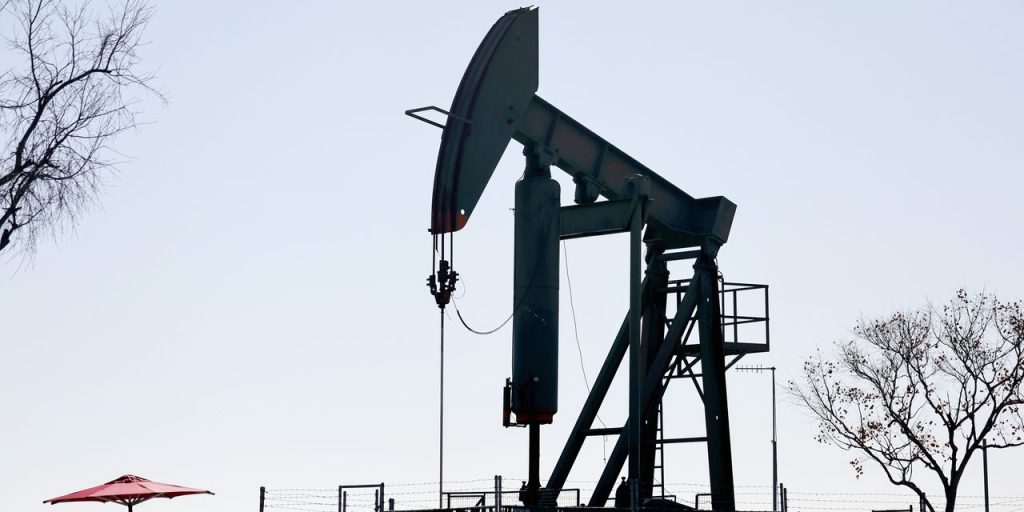Oil futures fell on Monday, with U.S. prices ending below $80 a barrel for the first time in more than week as investors returned from a three-day Easter weekend.
Crude prices had surged in holiday-shortened trading last week after the Organization of the Petroleum Exporting Countries and its allies announced an unexpected round of production cuts.
Price action
-
West Texas Intermediate crude for May delivery
CL.1,
+0.07%CL00,
+0.07%CLK23,
+0.07%
fell 96 cents, or 1.2%, to settle at $79.74 a barrel on the New York Mercantile Exchange. That was the lowest front-month finish since March 31, according to Dow Jones Market Data. -
June Brent crude
BRN00,
+0.14%BRNM23,
+0.14%,
the global benchmark, fell 94 cents, or 1.1%, to at $84.18 a barrel on ICE Futures Europe, also the lowest settlement since the end of March. -
Back on Nymex, May gasoline
RBK23,
-0.32%
lost 0.2% to end at $2.81 a gallon, while May heating oil
HOK23,
-0.04%
rose 0.8% to $2.68 a gallon. -
May natural gas
NGK23,
+1.65%
climbed by 8% to $2.17 per million British thermal units after losing more than 9% last week.
Market drivers
WTI and Brent each jumped by more than 6% last week, the third straight weekly rise for both grades. Last week’s rally followed the April 2 announcement by Saudi Arabia and OPEC allies, together known as OPEC+, of plans to cut output by a collective 1.15 million barrels a day beginning in May through the end of 2023, with Russia also pledging to extend a cut of 500,000 barrels a day through year-end.
Crude prices declined as “most energy traders are still on the sidelines until we get a clearer picture on the global growth outlook,” said Edward Moya, senior market analyst at OANDA.
“The short-term crude demand outlook will soon be clearer,” he said in a market update. “This week, we will find if the U.S. economy is taking the steps into the recession pool or if it is going to do a cannonball into it,” with inflation data due out Wednesday.
Fears of a credit crunch in the wake of last month’s banking woes and continued tightening by the Federal Reserve and other central bankers have stirred worries of a steep global slowdown that would undercut crude demand.
In a note, Stephen Innes, managing director of SPI Asset Management, said the market is “entering the peak uncertainty phase” around the Fed’s next interest-rate move, with investors “debating if credit tightening from financial stress will be enough to warrant cuts, or if we are heading for more hikes,” so Fed uncertainty likely took some steam out of very lethargic oil markets on Monday.
China’s tensions with Taiwan and the continuing Russian invasion of Ukraine also continue to have influence on OPEC+ decisions, said Phil Flynn, senior market analyst at The Price Futures Group, wrote in a Monday report.
China, which maintains a claim over Taiwan, completed military exercises around Taiwan and on Monday said it’s “ready to fight” after a visit by Taiwan President Tsai Ing-wen to the U.S. last week.
Meanwhile, the $60 a barrel price cap “farce” on Russian oil looks like it is “backfiring as China and India suck down Russian oil, and Japan is already asking for a waiver as they need to get Russian supply,” said Flynn. What that means is that “oil should start building a floor at $80, working toward the high end of the $80 handle in the coming weeks.”
The Associated Press contributed to this report.
Read the full article here



